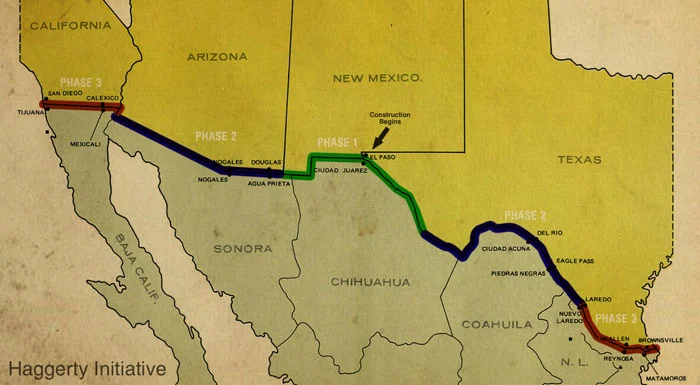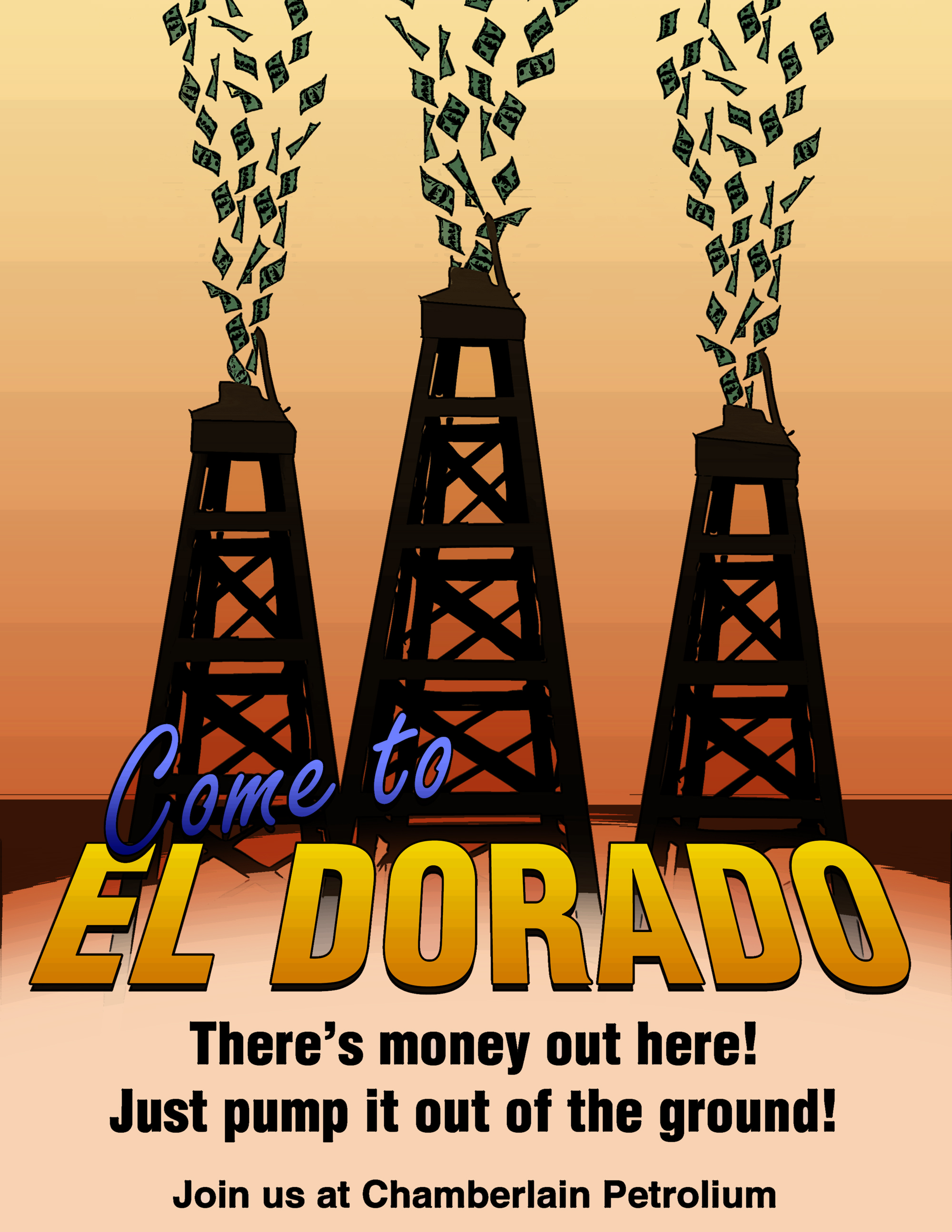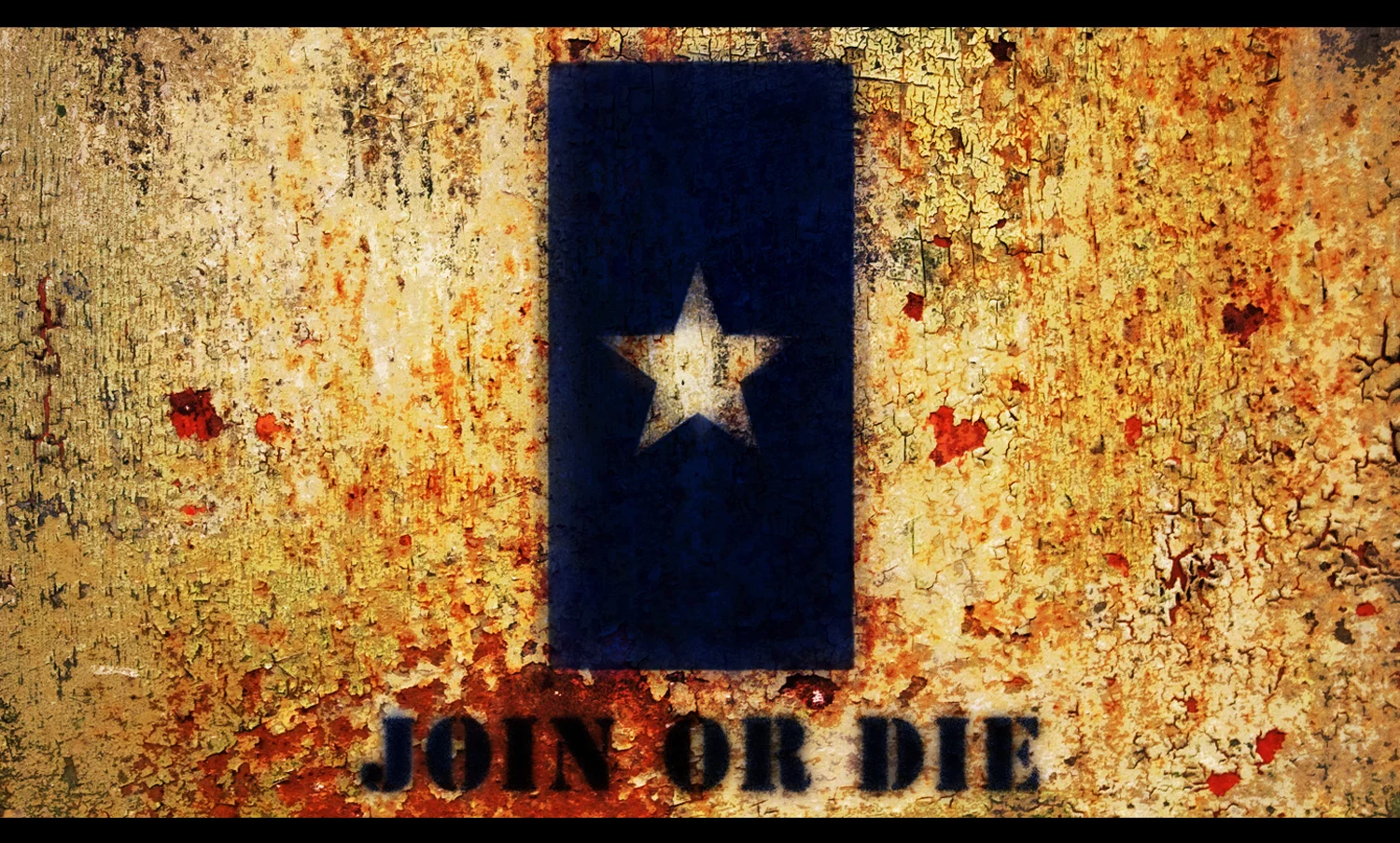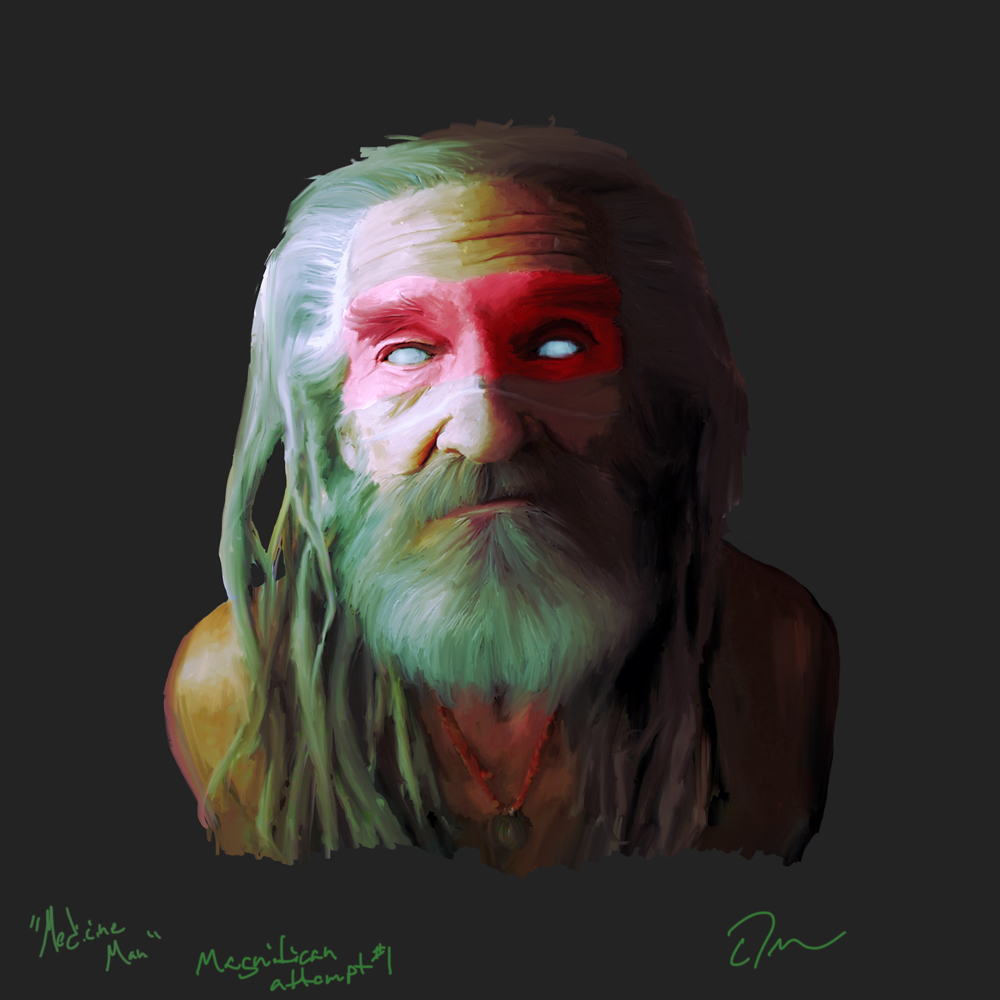before we head out - Editor's Note
(Jan 3rd, 2018)
There's an official pitch doc that I could've posted, but I thought I might flesh it out a bit, speak more to the thoughts behind choices and the reasoning that led to our design. Also, if the video above isn't playing, hit refresh. I don't what's wrong with it.
I'll be posting more and more of the content developed for Lonestar in the coming weeks. Quests, companions, storylines, and anything else that might be interesting.
where ya headed?
Texas.
Texas carries a wealth of themes, styles, and history that can be easily woven into the Fallout universe. A number of states make up what is known as "the West", but Texas is the preeminent home of the cowboy. The mythic loner with their stetson hat isn't far removed from the wasterlander in their vaultsuit. The wasteland and the west are nearly identical. Both are sparsely populated stretches of unforgiving land where law is just word, unless it can be backed by a gun and someone who knows how to use it.
Recognition
Texas is one of the few states known by reputation to those outside the United States. Every player will have a preconceived notion of Texas. These notions can be accurate or stereotypical, but either will work to the setting’s advantage.
Canon Isolation
My chief concern was to keep Fallout: Lonestar separate from the existing continuity of the Fallout franchise. I didn't want to presume to change the work of other writers and designers. In my mind, this is where a work becomes fan fiction. I believe you can use a pre-existing setting to tell an original story, but the moment you change existing stories and characters you've lost your authorship.
Texas is as far from the existing Fallout continuity as it is geographically distant. What little content that was developed for Texas is now considered non-canon. Texas is outside of the New California Republic (NCR), outside of any known territory belonging to Caesar's Legion, and (discounting Fallout: Brotherhood of Steel) unknown by any Brotherhood of Steel (BoS) expedition. For all intents and purposes, Texas is an island.
The Foreign Element
Fallout has thus far restricted its story to the United States. What information we can gather about other nations is revealed by clues scattered within America. Of our neighbors, we know Canada's fate was invasion and annexation. Mexico is less developed. We only know that, like elsewhere, it became lawless. Through Texas, we can reveal the fate of Mexico while keeping the focus on Fallout's America.
This also brings the opportunity to explore the less mainstream parts of the United States between the coasts. Thusfar, with the pseudo-exception of Fallout: New Vegas, Fallout has been regulated to the same places. With Fallout: Lonestar, we could explore a place with blended cultures in the post-apocalypse. It would be completely foreign to Fallout players, but still firmly American.
I GOT BUSINESS IN THE PASS.
Having been born and raised in Texas, I know many would find it difficult to describe a major Texan city unless they'd been there. They might know of Austin, Dallas, or Houston, but they’re difficult to visually identify when compared to the likes of Los Angeles, Washington D.C., Las Vegas, or Boston. Rather than attempt to sell a major city, I decided to find a location that better fit the story and the scope of our resources.
SCOPE
As an amateur content mod, our development capacity was extremely limited, but we still wanted to use exteriors. We wanted some degree of sprawling landscapes that have become iconic to Fallout. El Paso is well-known, but relatively small when compared to other major cities in Texas. Its post-apocalyptic analog would be a smaller territory lost in the desert wasteland. Aside from the practical benefit, the smaller scale also presents a more authentic western environment where the stakes are regulated to single towns.
The name
El Paso is Spanish, meaning "the Pass" as it sits on the US/Mexico border near a gap in the mountains that lead into New Mexico. I wanted to use the post-apocalyptic name "The Pass" as a not so subtle reference to the western cliche "head them off at the pass!", which plays into the A-story of tracking down an escaped fugitive.
Rough place
It Can get a might bit windy.
While Fallout: New Vegas skirted the sandy scrub of Nevada, this is a chance to embrace an actual desert. The ashy sands of the Pass give the appearance of cities and settlements sinking into dune seas. The sand, a mix of normal sand, ash, and other fallout, tints the desert grey. The terrain is intended to appear oceanic, a notion reinforced by settlements such as "Lighthouse" and iconic storms that plague the territory.
Black Blizzards
I was awe-struck to find that the Dust Bowl of the 1930's was a man-made event. Intense farming in key areas of the United States cleared areas of wind-breaking vegetation and produced huge amounts of unanchored farming soil that turned to dust as prevailing winds blew them into enormous clouds. These choking walls of dust were called "black blizzards" or "black rollers", and sometimes grew so thick they blacked out the sun. They were also known to carry intense amounts of static electricity, so much that they would kill a farmer’s crops through electrocution.
If simple farming could effect such a horrifying event, a nuclear holocaust would manage something similar. The black blizzards would limit visibility, temporarily increase radiation level, disable fast travel, and cause damage over time to the player. The intent being that the player would need to seek shelter, something inspired by playing Fallout 4 on Survival Mode. In Fallout 4, radiation storms would hit the Commonwealth and, as Survival Mode disables fast travel, I would have to endure the radiation or find shelter. The radiation storms were more aesthetic in nature so enduring them had little penalty. I found myself wishing I'd be forced into some nearby house or cave to wait out the storm.
The Wall
It's not hard to notice how most open-world games are surrounded in mountains. Every Fallout game produced as an open-world FPS has been more mountainous than the source geography. El Paso has mountains, but only to the west. The rest is open desert and the US/Mexico border. Changing the geography would seriously change the aesthetic of Fallout: Lonestar, so I came up with a very Fallout solution: Think of something crazy the government could do, then just let them do it.
Building a wall along the nation's border, any border, is crazy on the level of building over a hundred large-scale fallout shelters across the United States... so it's perfect. Along the southern border of the Pass is an enormous metal border wall separating Texas from Mexico. Rising from the panic of the New Plague, the border wall survived the Great War intact. It serves as both a large geographical landmark and as the southern barrier of the worldspace.
(NOTE: The Wall, along with all the other world locations, will get its own article as there is a ton of information about it.)
Folks are a bit rough
I've got a few stories I could tell.
Fallout: Lonestar is based more on Fallout 3 and Fallout: New Vegas than Fallout or Fallout 2. While other Fallout titles are important in their own right, the medium we’re using is intrinsically attached to Bethesda Softworks' titles. To assure Fallout: Lonestar is in keeping with its parentage, the narrative trends of the previous titles were given critical analysis and interpreted into key concepts.
Fallout 3 had the responsibility of reintroducing the brand. Therefore environmental narrative supports great swaths of franchise exposition. Everything that needs to be known about the world of Fallout is included and highlighted through various means.
Reflecting the Karma mechanic, the tone of Fallout 3 is a system of binaries oscillating between good and evil with some limited amount of neutrality available. This is most directly stated through Three Dog’s “the Good Fight” and present throughout the global narrative. Good and evil are presented generally through numerous mediums and mechanics, but specifically by the conflict between the Brotherhood of Steel and the Enclave who represent the dichotomy respectively.
More thematically representative of Fallout and Fallout 2, Fallout: New Vegas focuses on the Core Region to marry the old Fallout to the new, bringing the franchise full circle. The environmental narrative largely reflects the events of Fallout and Fallout 2 bringing a substantial amount of Core Region exposition and introducing the player to a more complicated world of competing factions and ideologies.
Political conflict sets the tone with disputes over resources, specifically electricity from Hoover Dam and HELIOS One. The stakes are set as conflict rises over the fate of the Hoover Dam and New Vegas itself, each side presenting acceptable arguments as to why they should have control over these resources.
Fallout: Lonestar introduces elements of the Fallout world that are wholly unconnected to existing narrative presented in any other canon title. The environmental narrative serves to highlight the events that led to Texas’s unique Great War experience, environment, and factions.
A recurring theme is the right to authority. Quests often involve a crisis wherein charge must be taken and morally ambiguous judgments must be made. The most relevant crisis involves the global narrative’s conflict between the Lonestar Confederacy and the growing revolutionary movement. As the importance of the Pass jumps suddenly into the political theater, sides are taken and weapons are drawn before either side knows exactly what they are actually fighting over.
The supporting narrative reinforces the positive and negative aspects of autonomy and fealty. The player's personal journey highlights these ideals as she questions her own role in the wasteland and to whom she is loyal.
CANON ADHERENCE
For the purposes of story and lore continuity, Fallout: Lonestar adheres to lore established by Fallout, Fallout 2, Fallout 3, Fallout: New Vegas and Fallout 4. Regarding other Fallout source material:
Fallout: Brotherhood of Steel & Fallout Tactics
According to Executive Producer Todd Howard, “... neither Fallout Tactics nor Fallout: Brotherhood of Steel happened.” Excluded from the official canon, they are ignored for the purposes of Fallout: Lonestar.
Interplay Title, Codename: Van Buren
Van Buren was the project name Black Isle Studios assigned to their cancelled version of Fallout 3. While not officially canon, elements of Van Buren are lifted, stolen, or referenced as long as they refer to regions or topics that do not conflict with existing canon.
Chris Avellone’s Fallout Bible
The Fallout Bible is a collection of documents containing background material for the first two Fallout games. They were compiled, written, and released by man about town Chris Avellone in 2002 on a semi-regular basis. Written while at Interplay when the rights to Fallout were owned by Interplay, the Fallout Bible is considered, for all intents and purposes, canon.
ADditional fallout topics explored
A number of events occurred in the Fallout universe that have not featured in recent titles. I want to get into a couple of these in Fallout: Lonestar.
Oil & the Resource Wars
Texas continues to produce vast amounts of oil beyond the divergence point. Whereas the the Texas Oil Boom waned severely in the latter half of the 20th century, here it continues until a number of years before the Resource Wars begin, becoming one of its causes.
The Resource Wars are heavily referenced in the environmental narrative as its economic effect can be seen in the arrested development of El Paso and in the propaganda that survived the Great War.
The New Plague & National Quarantine
According to the Fallout Bible, as a result of the New Plague “The United States closes its borders and the first-ever national quarantine is declared.” Given it makes up a large percentage of the southern U.S. border, this would affect Texas considerably.
i've Heard those stories.
well, Some things never change.
The Fallout series explores both ancient and modern themes through a setting that bridges the futuristic and the historical, the fantastic technologies of the world to come and the feudal states of the wasteland. When selecting themes for a Fallout game, it is best to find a common thread in past and present genres.
Fallout: Lonestar combines the American Western with the modern Police Procedural or "Cop Drama". There are many commonalities between these two genres, but Lonestar will focus specifically on law, order, renegade heroes, justice, and dramatic gun-play.
THE AMERICAN WESTERN
Several Fallout titles have explored the similarities between the Wild West and the Post-Apocalyptic Future. Both are harsh, wild frontiers where, as Sergio Leone noted, “life has no value.” They often feature a semi-nomadic wanderer engaged in shootouts, standoffs, and showdowns. Fallout: Lonestar brings these similarities forward as a central stylistic choice.
THE MAGNIFICENT SEVEN
Fallout: Lonestar takes a great deal of its inspirations from The Magnificent Seven, a film whose premise of “one hero recruits several other heroes for a larger goal” is applicable to the Fallout franchise as a whole. The films centers on themes such as survivor's guilt, the measure of a man, and matters in life and how that life ends. The ride into the sunset never ends, the killing takes its toll, and they die either by the gun, alone, or with a bottle in their hand.
COP DRAMAS & POLICE PROCEDURALS
These sub-genres differ primarily in their intended level of authenticity. Cop dramas are more violent, action-oriented, and glib, whereas police procedurals focus more on the human drama involved in the day-to-day operations of law enforcement. Fallout often demands this kind of alternating focus between the serious and the absurd. Played against the more serious western pastiche, these elements are fertile ground for Fallout’s more humorous side.
LAW & JUSTICE
What is law in the remote settlements of the wasteland? Morality? Consensus? Force? Where to draw that line will be questioned and be ultimately decided by the player.
SURVIVOR’S GUILT
Outlaws and gunslingers who survive by any means necessary ultimately live lives without meaning. Our companions each suffer different existential crises over the cost of survival in the harsh reality of the wasteland.
RANGERS
The Confederate Rangers in Fallout: Lonestar differ from the Veteran Rangers of Fallout: New Vegas, or the Desert Rangers of inXile’s Wasteland 2 by their function as law enforcement officers within a post-apocalyptic government. The Desert Rangers and Veteran Rangers are more akin to members of an army or a democratic militia. Given that all three groups identify as “Rangers” in this kind of setting, it’s important to distinguish the Lonestar Rangers as much as possible.
FOOD
In Fallout 3 the need for clean water drove much of the conflict in the D.C. Wasteland, and Fallout: New Vegas’s story centered on the Hoover Dam and the electricity it produced. In Fallout: Lonestar food is what is at stake. The need for a reliable source of food is painfully evident in the irradiated deserts of Lonestar.
Additionally, many unique food items have appeared in Fallout games, but there are few to no established food companies previous to Fallout 4. A major old-world antagonist, Magnifico, will take the role of a Vault-tec character. A long dead company whose ambitions effect the world beyond the Great War.
Tell me a new story
La Tormenta se Acerca
Story a
The murder of a government official fans the flames of revolution as corrupt deputies do everything in their power to pin the murder on a rebellious militia leader. The player, a Lonestar Ranger, leads the investigation, but when the murder is solved the damage is already done. Various militias organize into a single faction demanding a withdrawal from the Confederacy. Organized opposition evolves into total revolution when a charismatic leader rises: the wanted criminal, Matthew Moreau.
Confederate Chain
As an agent of the Confederacy, the Ranger begins Fallout: Lonestar on the Confederate questline. On a train bound for the confederate capital of Reunion, the Ranger is part of a prisoner transfer of the traitorl Matthew Moreau, but the train is hijacked and Moreau escapes.
Questline Divergence Point: The Murder of Marshal Russell
Returning to the Pass, the Ranger heads to the city of Graveyard for debriefing by Marshal Russell. From there they are is dispatched to the settlement of Cottonwood to quell a riot while the Marshal deals with the Moreau situation. Once completed, the Ranger returns to Graveyard to find the Marshal has been murdered.
This is where the the narrative divides between Confederate and Revolution quests. The murder of the corrupt Marshal is seen as a rallying point for the various militias, whereas the Confederacy sees it as an opportunity to purge the corruption within their own ranks and secure the Pass properly. The Revolution questline begins with the investigation of Russell’s murder, whereas the Confederate questline is concerned with securing the Pass and tracking down Moreau.
Securing the Pass
Newly appointed Marshal LaRoux enlists the Ranger to aid in her in a crusade to retake the Pass. An idealist, LaRoux views the Pass as suffering from three ailments: insurrection, corruption, and brigandry. If she can cure the territory of these ills she will be remembered as the woman who tamed the Pass.
Insurrection - LaRoux is convinced that Moreau is involved in the revolution movement. Tracking him down is essential to disbanding the militias.
Corruption - Russell may have died, but his legacy continues. The confederate ranks must be purged.
Brigandry - Raider factions have grown bolder and expanded their territories. Confederate outposts are being attacked and LaRoux believes the raiders are testing confederate resolve. They must be brought to heel or completely destroyed.
Revolution Chain
While investigating the murder of Marshal Russell, the Ranger is instructed to question militia leader, Jackson Strain. As the founder of the "Sons of Vault 50", Jackson has butted heads with Russell for years. Russell’s cronies are certain he is responsible for the Marshal’s death, but Jackson’s alibi is tight.
By the time the Ranger concludes her investigation, the call for Strain’s hanging has grown out of control. A lynch mob descends on the militia’s headquarters at Lighthouse where the Ranger must deal with the situation as they see fit.
While multiple conclusions are possible, the event unites the militias against the Confederacy. The assault on Strain is a moment of naked hostility that no one can ignore. Strain and others attempt to bring the Ranger into their cause. They describe their right to autonomy in light of the many crimes the Confederacy has committed against them.
To aid them in their quest for legitimacy and justice, the militias ask the Ranger to make good on the promises of the Confederacy. As the line progresses, Moreau’s influence over the militias is revealed. His agenda comes to fruition as he seizes Van Buren Prison, dedicating it to the fight for revolution. Van Buren becomes a fortress and Moreau accepts the burden of leadership.
Vaya con Dios
story B
The focus of "Vaya con Dios" is on the companions. Like Seven Samurai and The Magnificent Seven, the conflicts of the age (story A) are a backdrop for the exposition and development of the key characters. As they attempt the seemingly small victory of saving Magnifico, the larger conflict moves around them and is filtered through their eyes.
Background
The Lonestar territories have always lived at the edge of famine. Only a tenuous, inequitable treaty with the distant Casino Nation keeps the Confederacy from starving to death. Unable to grow new food, the government knows its fall is inevitable. in the Pass, however, tribals are secretly growing corn.
Inside the village of Magnifico, the Magnificans have unknowingly stumbled upon early genetic research that would later be included inside the Garden of Eden Creation Kit. As if by a miracle, they grow food in the desert, making them Lonestar’s most valuable secret.
In Story A, two primary factions are in dispute over how the Pass should be governed. The Confederacy, the current government, is far from its center of power in Reunion (Dallas) and has become susceptible to graft and corruption. The Revolution is a young, passionate reactionary cause that is easily swayed by charismatic leadership. Both, however, suffer the same famine that grips the territory. If one were to secure a renewable source of food, the Pass would be theirs.
The Story
The Magnificans, ignorant of the science at play, are using old world genetically-modified corn seeds to grow food in their lands. The only person outside of Magnifico that knows of this “desert miracle” is the wanted criminal, Matthew Moreau. During a prison transfer, Moreau’s train is derailed and he escapes, leaving the injured Ranger behind to pass out from her injuries.
The Ranger awakes to find herself inside the tribal village of Magnifico, seemingly rescued from the wreckage of the train by tribals. A Magnifican spiritualist, known as “The Medicine Man”, describes a vision granted to him by the spirits. In the vision he describes the Ranger as the savior of Magnifico, but that to save the tribe the Ranger will need to seek out six warriors to help defend them from “the coming storm”.
In reality, the Medicine Man is a chem-dealing criminal who convinced the Magnificans that he was a spiritual sage so he could evade confederate capture. The six “warriors” are vigilantes, gunslingers, and other undesirables he met during his criminal career. With the right incentives they could save the Magnificans from those who would take the desert miracle for their own purposes.
“The Battle for Magnifico”
As the A & B stories draw to a close, tensions have mounted around the tribal territory of Magnifico. The Ranger, having chosen to side with either the Confederacy or the Revolution, must defend Magnifico against the other faction. Using a variant of the settlement building mechanics used in Fallout 4, the Ranger will create a defense for the village as well as place their six companions strategically to assist in the battle.
Neither side in this conflict is intended to be the good or correct side. Exploiting western themes, Fallout: Lonestar aims less for the right choice and more “the choice the player can live with”, meaning that both options bear the weight of an unintended consequence.














